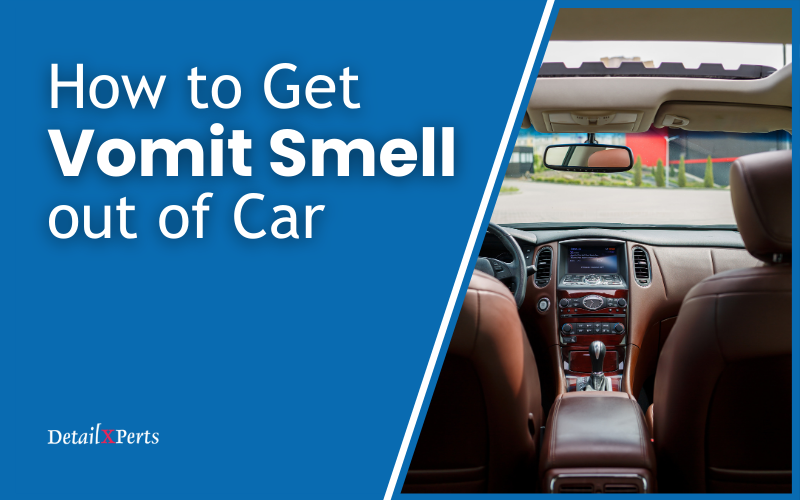If your idea of automotive detailing is a quick spin through the local car wash, followed by plopping 4-quarters into an industrial vacuum – chances are you’re more of a car owner, than a car lover. No worries, we’re here to spell out for you the basic detailing procedures involved in a professional car exterior cleaning service.
The 4 Basic Detailing Procedures
Exterior detailing involves four main activities. The first of the basic detailing procedures is a prep wash of the exterior. This way you remove dirt, dust, and other loose contaminants. Next comes paint cleaning and rejuvenation to make the car surface look great. The third step is protection application on the paint surface to keep it looking great. Finally, other exterior surfaces are detailed.
Before You Start
Before beginning the exterior detail, conduct a complete inspection of the outside of the vehicle. Check the bumpers, spoilers, and rocker panels for scrapes, scuffs, and excess kicked-up foreign material like tar and road striping.
Then, check the supplies you have and make a list of what you need to buy additionally. What you’ll need depends on the condition of your car’s finish. If you have washed and waxed your car regularly, you will probably only need just a few detailing products like:
- Microfiber towels (the more, the merrier!)
- Black-trim treatment
- Spray-on detailer
- One-step polish/wax
- Wax applicators or orbital polisher
If your car hasn’t been waxed recently or has a neglected finish, you might need to call in the heavy artillery. It consists of:
- Clay bar
- Mild polish or pre-wax cleaner
- Wax
When you’re ready to tackle the job, here are some basic detailing procedures tips to help you get your car’s paint back to a showroom shine.
Prep Wash
First, conduct the prep wash. The purpose of the prep wash is to remove loose dirt, dust, and debris from the vehicle. Since the vehicle is to be detailed and wax applied, it is permissible to use harsher cleaning chemicals during the prep wash. Remember to always wash from the top down. This process also includes wheels & wheel wells. Maintaining a clean finish will help prolong your wax or sealant on your paint. This step should be done weekly.
Claying
Some technicians prefer to use detailer’s clay during the prep-wash step. If doing so, first wash the vehicle and rinse it thoroughly. Then clay the vehicle, using a new batch of car wash shampoo as clay lubricant. Finally, rinse the vehicle and thoroughly dry it. Using detailer’s clay during the prep wash is recommended for vehicles with minimal surface contamination.
The advantage of claying as a separate step after drying the vehicle is that you can be more thorough and monitor your results as you rub the vehicle’s surface with the clay. After claying the car, the surface should feel noticeably smoother. Periodically flatten and fold the clay to expose a clean surface. There’s one major caveat: Don’t drop the clay! Dropping the clay renders it useless, as it will pick up dirt that can scratch the car.
Polish
Next, perform any necessary polishing steps. The purpose of polishing the paint is to remove minor sub-surface damage and shine the paint surface. A true polish will not add any protection to the paint surface – this is saved for the waxing step. Polish smooths, clarifies, and cleans the surface of your car. Polishing will remove some small scratches, but it can also remove paint, so if you polish by hand, be careful to use light pressure. This step should be done 1-2 times a year.
Protection
Once the vehicle’s paint has been rejuvenated to your satisfaction, it’s time to protect that fresh paint surface with either wax or paint sealant. A high-quality wax will typically provide three to six months of protection. A polymer paint sealant will typically provide six to twelve months of protection. This step is your protection for your paint, it will also add gloss and wetness to the paint. Apply the wax directly to the applicator, not the car, and work on one small area at a time. This step should be done every 2-6 months.
Final Detailing
The final of the basic detailing procedures is spending some time on the other exterior surfaces that may need attention. For example, polish the chrome trims. Or spray-wax and wipe the wheels and doorjambs. And don’t forget to clean and wipe the windows to a streak-free finish.
The most visible and possibly most important part of any detailing job is the exterior. The four basic detailing procedures will rejuvenate and protect the exterior surfaces of the vehicle. Taking into consideration the condition of the vehicle, perform the necessary steps to make the exterior look as new as possible. Properly cleaning and treating your car’s paint will add more to your car’s appearance and value than anything else you can do to it. You can always schedule an appointment with your local professional detailer.
Enjoyed this post? Sign up for our newsletter to receive more valuable tips, ideas, coupons, and extras!





